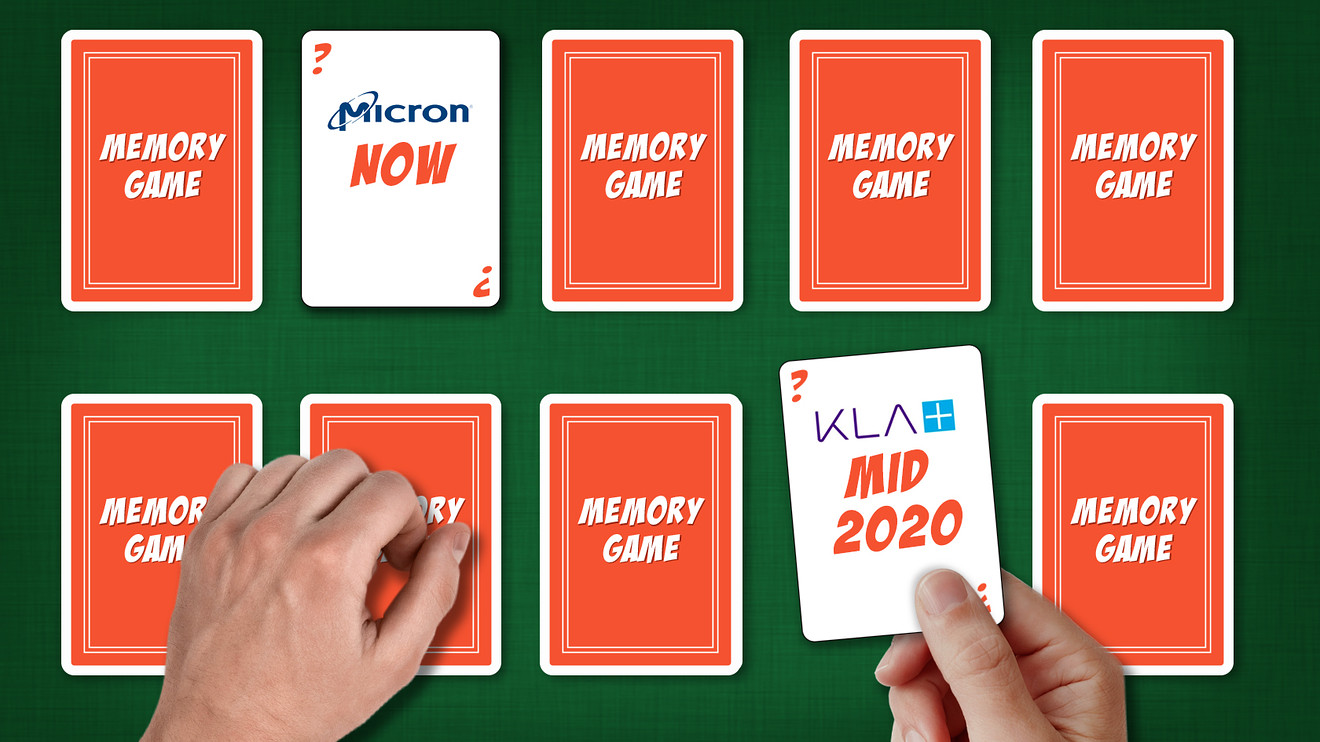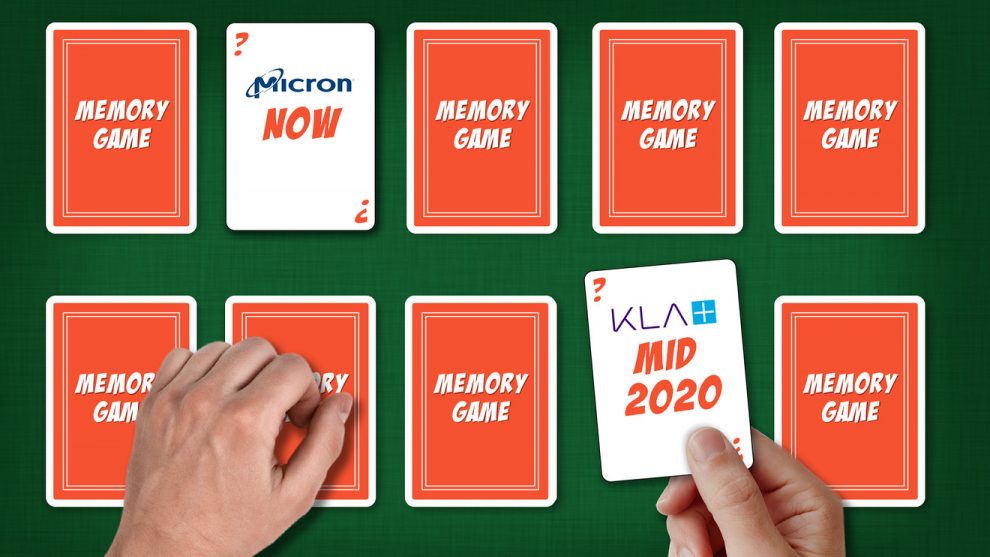
Memory stores what has happened in the past, but can’t tell you what will happen in the future. It seems the same is true of memory companies.
Memory chips usually make up the biggest volume of semiconductors on a single electronic device, and they are as important as the brain chips — while microprocessor chips are seen as the brains for electronics, the memory chips store the data and interact with the brains.
After a shortage of chips slammed tech companies late in 2017, customers went on an unprecedented buying spree at high prices in 2018 to ensure their gadgets and data centers would have what they needed. Memory was the largest category of the semiconductor market, accounting for $158 billion of the $469 billion in total chip sales in 2018, a jump of 13.7% from 2017.
At the time, memory manufacturers like Micron Technology Inc. MU, +4.84% repeatedly preached that it was a new demand environment for memory chips, not a cycle. As it turned out, it was a cycle, and we are now in a severe downturn: According to the latest data from the Semiconductor Industry Association, worldwide chip sales tumbled 14.5% in the first half of 2019, with memory being the biggest culprit.
Now, the biggest question for memory manufacturers — and possibly the entire semiconductor industry — is when the downturn will end. Halfway through earnings season, we have received a lot of guesses that the downturn will end this year, but there also have been mixed signals.
See also: Tech-spending alarms are ringing amid Trump’s latest China-trade volley
Unsurprisingly, one of the most optimistic outlooks for memory came from, you guessed it, Micron, one of the top four memory-chip makers in the world. Micron’s top executives hinted that the worst is already behind them.
“At some point we knew they’d run out of inventory and they would need to order. And this appears to be the quarter in which that’s happening,” Micron Chief Financial Officer David Zinsner said in late June. While there won’t be another big update for investors until late September on Micron’s financial results, Zinsner spoke earlier this week at a KeyBanc Financial Markets technology conference, still sounding optimistic about inventory usage by Micron customers and demand.
“What’s helping us is, demand has come back and we’re starting to see the inventory digestion that we saw at the customers in the cloud space, in graphics,” he said, according to a transcript. “We’re actually seeing pockets of tight supply with some of our customers, with certain with our DRAM and NAND products. So, that’s something, I think that’s interesting to note right now. Of course we remain cautious,” he said, adding that Micron is going to very carefully manage capital spending and operating expenses.
But other large memory-chip companies are not as confident.
Intel Corp. INTC, +2.72% said at the end of July, with another month of sales banked, that its memory-business revenue was down 13%, and was non-committal on a rebound amid speculation on Wall Street that its memory business could be the next to be sold after the chip giant sold its smartphone communications modem chip unit to Apple Inc. AAPL, +4.23% . Chief Financial Officer George Davis said that “memory had continued to weaken,” and suggested that memory had decreased the revenue forecast Intel gave for the rest of the year.
Samsung Electronics Co. Ltd. 005930, +2.09%, another of the top memory makers in the world, recently lost the crown as No. 1 overall chip maker back to Intel as price declines in dynamic random access memory (DRAM) and flash memory chips, or NAND, hurt Samsung’s total revenue. Like Micron, Samsung said it saw DRAM start to bounce back as some data-center and mobile-phone purchases picked back up, but added that there was “low visibility in the business” for the future.
Fellow Korean memory-chip maker SK Hynix Inc. 000660, +3.89% saw its second quarter net income tumble sharply, due to plunging prices and sluggish demand in the memory market. In its call with analysts in late July, Hynix executives said the average selling prices of DRAM chips fell 24% in its second quarter sequentially from the prior quarter, and average selling prices in NAND fell 25% on a year-over-year basis.
“DRAM market in the second quarter showed signs of recovering from the demand slowdown in the previous quarter, but the pace was not up to expectation due to unanticipated external uncertainties,” Chief Financial Officer Jin-Seok Cha said.
More from Therese: AMD has built Rome, but it will take much more than a day to know if it’s a winner
Harsher forecasts have come from another segment of the chip sector — equipment manufacturers. Executives at KLA Corp. KLAC, +0.76%, which provides manufacturing machines and reported better-than-expected second-quarter results last week, forecast that both of the main memory-chip makers would not start buying new equipment again until about the middle of next year, possibly later for DRAM.
“We don’t see a lot of momentum in DRAM,” Rick Wallace, KLA’s chief executive, told analysts on the company’s conference call. “So, you think about when the recovery might come for NAND, probably first half 2020. In DRAM, what our customers are saying now is more mid-2020 timeframe before we’d see any meaningful change.”
Another equipment maker, Lam Research Corp. LRCX, +4.78% , said that customers were taking actions to begin to restore the supply-and-demand balance, reducing investment and lowering utilization levels for both NAND and DRAM up to the June quarter. As a result, Lam forecast growth for both NAND and DRAM continuing to decline, exiting the year well below the long-term demand trend lines.
“We believe the combination of factors influencing supply and demand creates a favorable setup for memory as we enter 2020,” Lam Chief Executive Tim Archer said on the earnings conference call in late July.
Read also: Lyft and Uber are giving investors what they want, which is bad for the rest of us
Eric Ross, an analyst with Cascend Securities, said that one reason for the slightly different forecasts from the equipment makers and the chip makers is due to the fact that memory developers don’t have to start up a whole new fabrication facility to develop higher density memory chips anymore, because of techniques to layer on more storage capacity, for example in NAND in three-dimensional designs.
“Memory and storage players, they have equipment for the next layering,” Ross said in an interview, adding that he is oversimplifying the explanation. “They bought that at the beginning of last year, so now, they keep a little bit of steady buying, but it’s not building a whole new fab.”
Ross, of Cascend, said that prices of both DRAM and NAND chips recently spiked, but added that the “spiking” comes after a big plummet, so it’s more as if prices have paused at current levels.
“Industry still needs to burn off the inventory overhang, but it’s not getting any worse,” he said in a recent note, adding that inventories should be flat this quarter and will start burning off in the third quarter.
Even when this downturn does end, there remains a question about what the new normal is for memory chips — if the sharp rise in demand and prices in 2017 and 2018 will return once companies work through this inventory glut. That question can’t be answered until the industry drags itself out of a hole though, and nobody seems to be exactly sure when that is going to happen — or if it already has.











Add Comment